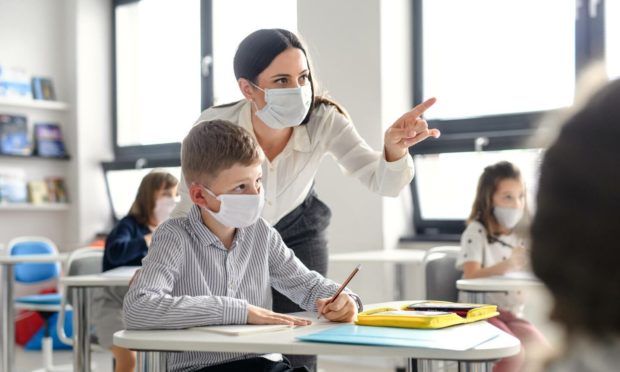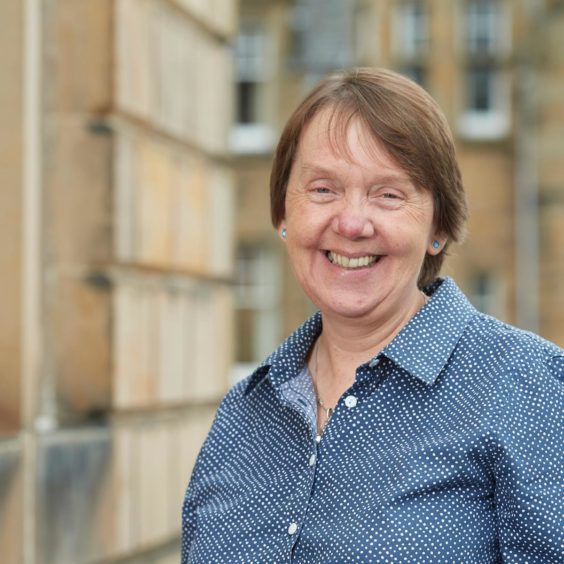Before teachers can guide our young learners to success, they have to be students themselves.
When schools and universities closed in 2020 and 2021, the next generation of teachers had their courses thrown for a loop.
But, as one local expert said, teachers are nothing if not adaptable. And learning online – with all of its challenges and pitfalls – is a good first step towards teaching online.
“The principles of good teaching are going to be the same in a digital space or a face-to-face scenario.
– Dr. John Mynott
We spoke to the heads of initial teacher education at two northern universities to find out how they adjusted on the fly during the pandemic, how their students reacted and how it has prepared them to lead pupils through pandemic learning.
Teachers can teach here, there, anywhere
Can you learn to be a teacher without being in a classroom? Dr John Mynott, head of initial teacher education at the University of Aberdeen, thinks you can – to an extent.
“The closure of face-to-face teaching meant that the delivery model for initial teacher education had to change to an online model during the pandemic.
“But the principles of good teaching are going to be the same in a digital space or a face-to-face scenario.
“The one thing I would say about teachers is that they’re incredibly adaptable and resourceful. So if there’s something that they can use that will help them get learning from their pupils, they’re going to make that change in their practice.”
Digital learning here to stay
Despite the importance of classroom, experience, however, Dr Mynott recognized that the pandemic has shown the usefulness of digital tools. Whether that means making advice more accessible to students or getting parents more involved, digital learning has its benefits.
That means fewer chances for confusion, fewer chances to lose or forget an assignment, and more opportunities for parents to see what their children are learning.
Prof Morag Redford, head of teacher education at the University of the Highlands and Islands, said the switch to online wasn’t so drastic for her students during the pandemic. UHI delivers many of its classes online by design and has done for years.
Always room to improve
But the benefits of online learning depend on students and families having access to the right resources. They also depend on whether individual schools can deliver the same types of programmes.
Prof Redford found that the disruption to classroom placements hit some UHI students harder than others.
“That was the hardest part of our programme because at that point our students were linked with schools. But the experience for them was more variable than usual because it depended on how each school was running their lessons.
“It wasn’t ideal for learning to be a teacher. But, yes they lost on classroom experience, but they really gained a depth of experience of the different ways that schools are working digitally.”
Nothing tops classroom experience
Still, returning to classrooms – or entering them for the first time – this year will require new teachers to showcase more of their adaptability.
“They will have some real strengths in the parts of teaching that they’ve really been able to get to grips with and practice. But there will be other areas of teaching within a school community that they haven’t had experiences of.”
Whether that’s the day-to-day running of a school, interaction and collaboration with colleagues or something as simple as sports days, some teaching experiences can’t be fully recreated online, she said.
And whether or not there is a pandemic raging on the doorstep, what aspiring teachers really want is to be with their students, Dr Mynott added.
Like UHI, Aberdeen restructured its curriculum calendar to give students as many opportunities as possible to be with pupils in person. It’s the most effective way for aspiring teachers to hone their craft, he said. But it’s also a dream come true for many students.
“Yes, students will need to be prepared in terms of what restrictions they might face in the classroom. They also need to be prepared that these restrictions might change.
“But if you’re an education student, you want to be in the classroom. That’s where you want to be, that’s where you dreamed of being.”
Read more from the schools and family team
Starting from Zero: What was it like for new teachers during the pandemic?
All A’s, now going for gold: Aberdeen star student and Paralympian jets off to Japan












